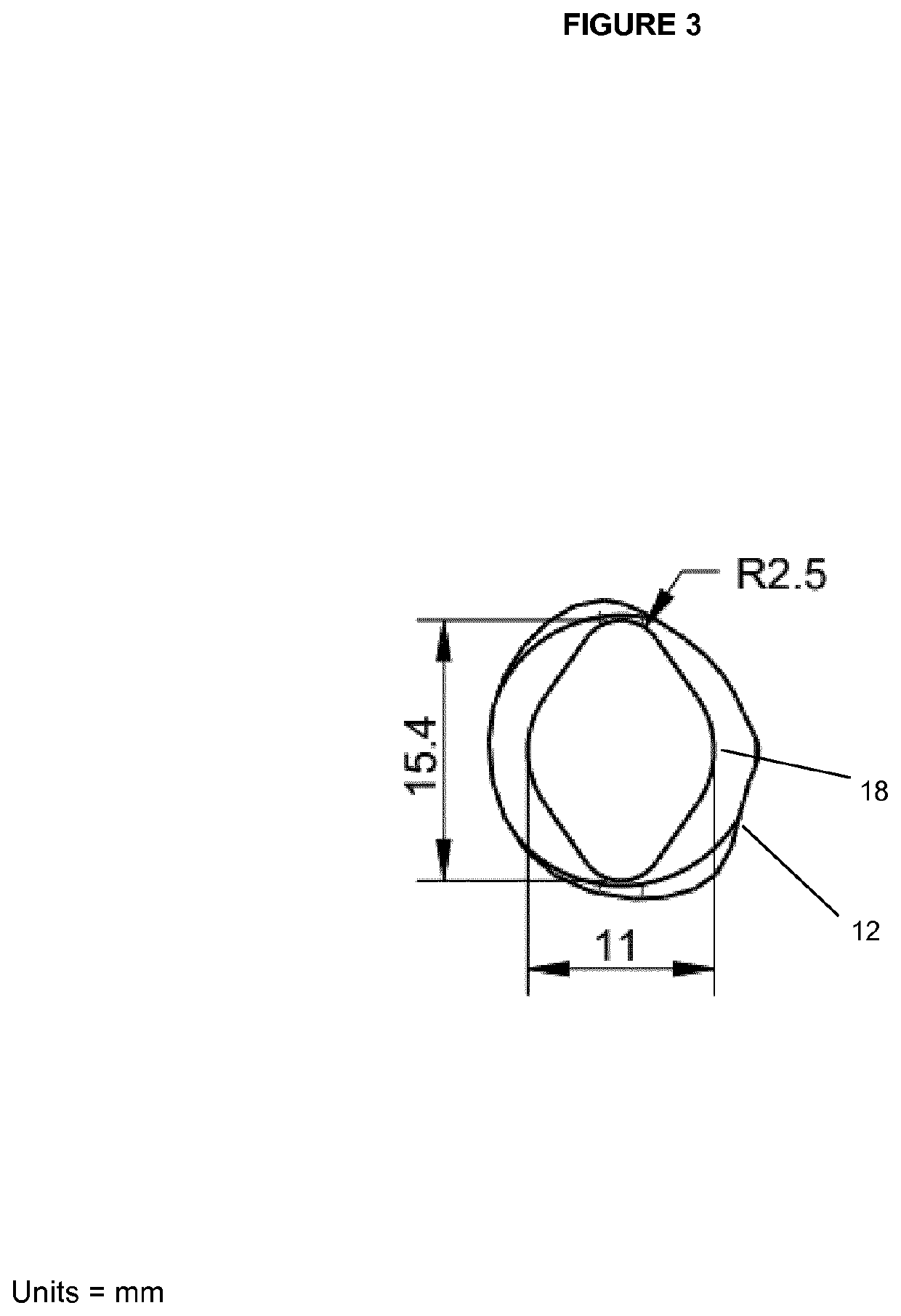Improved cell culture device
a cell culture device and cell technology, applied in the field of cell culture devices, can solve the problems of inability to determine exactly the number of spheroids, tissue cannot be used for other experiments, and become very problematic, so as to reduce the number of dead cells within the spheroid, less access to nutrients, and negative impact on other cells in the spheroid
- Summary
- Abstract
- Description
- Claims
- Application Information
AI Technical Summary
Benefits of technology
Problems solved by technology
Method used
Image
Examples
example 1
[0199]To avoid the agglomeration of spheroids, the well designed for the liver spheroids was adapted to contain concentric grooves on the bottom of the well. The purpose of these grooves is to create a spatial separation between the tissues to prevent them from agglomerating or fusing together. To demonstrate the function of the grooves, 40 spheroids, each composed of about 25,000 cells, were placed either in a well with the grooves or in a well with a flat surface (ie. without grooves). After 5 days, spheroids present in the well with a flat surface were starting to agglomerate together (see FIG. 11A) forming aggregates. This was not observed in the well with the grooves (see FIG. 11B). The tissue shown in FIG. 11A (3 spheroids agglomerated or fused to form a single unit) could not be used for further experiments normally performed on the spheroids—such as measuring the ATP content since the agglomeration or fusion of several spheroids adversely affects the result obtained. The tis...
example 2
[0200]Various materials used to manufacture a cell culture device have been tested. One material used for the cell culture device, PEEK, is a strong plastic polymer that is resistant to wear. PEEK is advantageous in drug testing because it is non-absorbent as opposed to, for example, the commonly used poly(dimethylsiloxane) (PDMS), which is known to retain small hydrophobic molecules, such as nicotine. PEEK has been found not to retain nicotine or NNK, another small hydrophobic molecule. Therefore, the cell culture device is suitable for the testing of drug effects on the tissues housed within the cell culture device without risk of the drug concentration (or concentration of its metabolites) being altered by the material.
[0201]Biocompatibility of the PEEK cell culture device is tested with organotypic lung and liver models.
[0202]The lung model is composed of normal human bronchial epithelial (NHBE) cells seeded on a Transwell™ insert and further cultured at the air-liquid interface...
example 3
[0213]HepaRG® cells are provided in cryopreserved vials containing about 10 million cells. The first step to prepare spheroids is to thaw the cryopreserved vials and to seed the cells (about 1000 to 50,000 cells per well) in each well of a multi-well plate. In this experiment, the wells of the plate are covered with an ultra-low attachment coating and the wells have a U-shaped bottom to ensure that the cells seeded in a single well do not attach to the walls. The cells are allowed to agglomerate at the bottom of the well. After about 3 days they will form a single spheroid or multiple spheroids in each well of the multi-well plate, depending on the choice of well that is used.
[0214]The cell culture chamber of the cell culture device into which the liver spheroids are placed has the discontinuous surface described herein which, in this example, is coated. Each spheroid is transferred independently from the multi-well plate to the cell culture chamber. Around 40 to 100 spheroids are t...
PUM
| Property | Measurement | Unit |
|---|---|---|
| width | aaaaa | aaaaa |
| width | aaaaa | aaaaa |
| flow rate | aaaaa | aaaaa |
Abstract
Description
Claims
Application Information
 Login to View More
Login to View More - R&D
- Intellectual Property
- Life Sciences
- Materials
- Tech Scout
- Unparalleled Data Quality
- Higher Quality Content
- 60% Fewer Hallucinations
Browse by: Latest US Patents, China's latest patents, Technical Efficacy Thesaurus, Application Domain, Technology Topic, Popular Technical Reports.
© 2025 PatSnap. All rights reserved.Legal|Privacy policy|Modern Slavery Act Transparency Statement|Sitemap|About US| Contact US: help@patsnap.com



